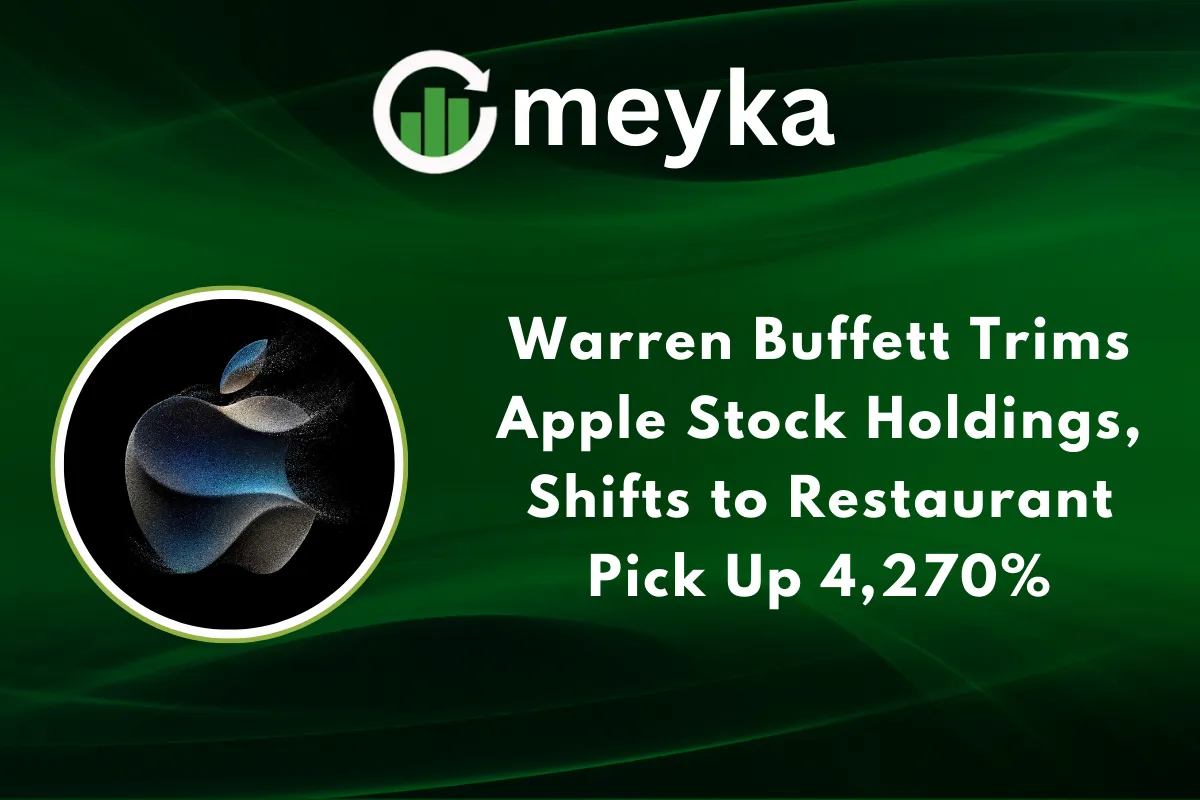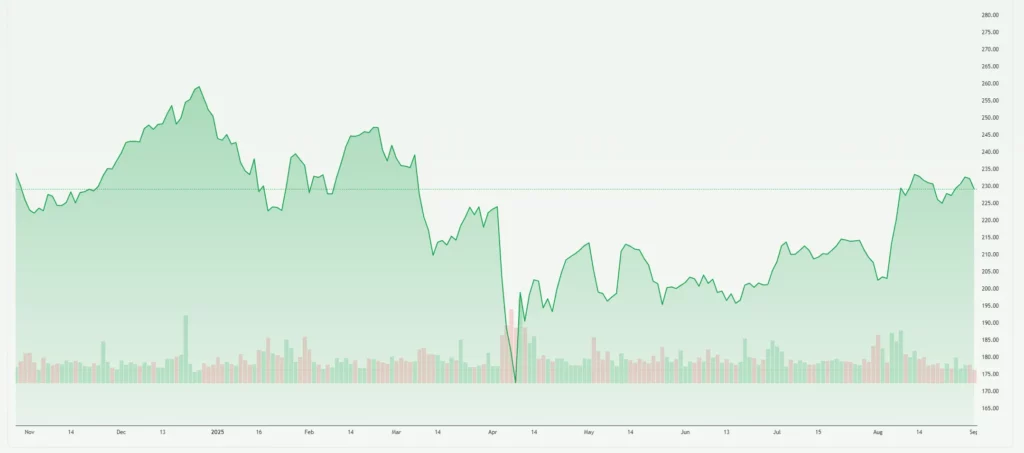Warren Buffett Trims Apple Stock Holdings, Shifts to Restaurant Pick Up 4,270%
Warren Buffett’s Berkshire Hathaway has made headlines with a dramatic shift in its investment strategy. The legendary investor has sold more than two-thirds of his Apple stock position while quietly building a new stake in Domino’s Pizza. This move represents one of the most significant portfolio changes in recent years.
The Oracle of Omaha’s decision to trim his Apple holdings comes at a time when the stock market shows mixed signals. Apple stock currently trades at expensive valuations despite strong revenue growth. Meanwhile, Buffett’s new restaurant investment has gained impressive momentum, rising over 4,270% in value.
This strategic pivot highlights Buffett’s evolving investment philosophy. His shift from technology giants to consumer-focused businesses reflects changing market dynamics and valuation concerns.
Buffett’s Apple Stock Reduction Strategy
Berkshire Hathaway has systematically reduced its Apple holdings since Q3 2023. The company sold 69% of its total Apple stock position during this period. This massive selloff surprised many investors who viewed Apple as Buffett’s favorite technology investment.
The timing of these sales appears strategic. Apple stock currently trades at 35 times earnings, representing a significant premium. The company’s PEG ratio of 3.5 suggests the stock may be overvalued relative to its growth prospects.
Apple’s Recent Financial Performance
Despite the high valuation concerns, Apple delivered strong results in the June quarter. Revenue grew 10% to $94 billion, marking the fastest growth rate since 2021. This performance exceeded many analyst expectations and demonstrated the company’s resilience.
The iPhone maker continues to benefit from strong consumer demand. Services revenue remains a key growth driver, providing steady recurring income. However, the premium valuation may limit future returns for investors.
Valuation Concerns Drive Selling Decision
The expensive Apple stock valuation likely influenced Buffett’s selling decision. At 35 times earnings, the stock trades well above historical averages. This premium pricing may not justify the current growth rates and market conditions.
Buffett has historically avoided overvalued investments. His disciplined approach to valuation has served Berkshire shareholders well over decades. The Apple reduction fits this long-term investment philosophy perfectly.
Domino’s Pizza Investment Opportunity
Berkshire Hathaway’s new Domino’s Pizza position represents less than 1% of the total portfolio. However, this small investment has generated outsized returns of over 4,270%. The restaurant chain has become an unexpected success story in Buffett’s portfolio.
Domino’s reported solid financial results in the second quarter. Revenue increased 4% to $1.1 billion, showing steady business growth. Same-store sales grew 3.4%, indicating strong customer loyalty and market penetration.
Domino’s Expansion Plans and Growth Strategy
The pizza chain has ambitious growth targets for the coming years. Management aims for 7% annual retail sales growth through 2028. The company also targets 8% annual operating income growth during this period.
Store expansion remains a key growth driver for Domino’s. The company added 178 net new stores in the recent quarter. Plans call for opening 5,500 new stores globally by 2028, representing significant market expansion.
Restaurant Stock Valuation Analysis
Domino’s stock also trades at premium valuations, with shares at 27 times earnings. This expensive pricing mirrors broader stock market trends in growth companies. However, the company’s expansion plans may justify the current valuation levels.
The restaurant industry faces unique challenges and opportunities. Rising food costs pressure margins, while delivery demand remains strong. Domino’s technology focus gives it competitive advantages in the evolving market landscape.

Market Context and Investment Implications
Buffett’s portfolio changes reflect broader stock market dynamics. Technology stocks face valuation pressures as interest rates remain elevated. Consumer discretionary companies like Domino’s may benefit from economic reopening trends.
The shift from Apple to restaurant investments shows Buffett’s adaptability. His willingness to change course demonstrates disciplined investment management. This flexibility has contributed to Berkshire’s long-term success record.
Historical Performance Comparisons
Investment success stories highlight the importance of timing and selection. Netflix investors who bought shares on December 17, 2004, saw $1,000 grow to $651,599. Similarly, Nvidia investors from April 15, 2005, watched $1,000 become $1,067,639.
These examples demonstrate the potential for exceptional returns in the stock market. However, such outcomes require patience, research, and sometimes luck. Buffett’s track record shows the value of consistent, disciplined investing approaches.
Future Investment Outlook
Berkshire Hathaway’s portfolio changes signal potential market shifts ahead. The reduction in Apple stock suggests caution about technology valuations. Meanwhile, the Domino’s investment indicates confidence in consumer spending resilience.
Investors should monitor these developments for broader market insights. Buffett’s moves often foreshadow larger trends in investment sentiment. His experience and track record make his decisions worth studying carefully.
The stock market continues to navigate uncertain economic conditions. Inflation concerns, interest rate changes, and geopolitical tensions affect investment decisions. Buffett’s portfolio adjustments reflect these challenging market dynamics.
Disclaimer:
This is for informational purposes only and does not constitute financial advice. Always do your research.







